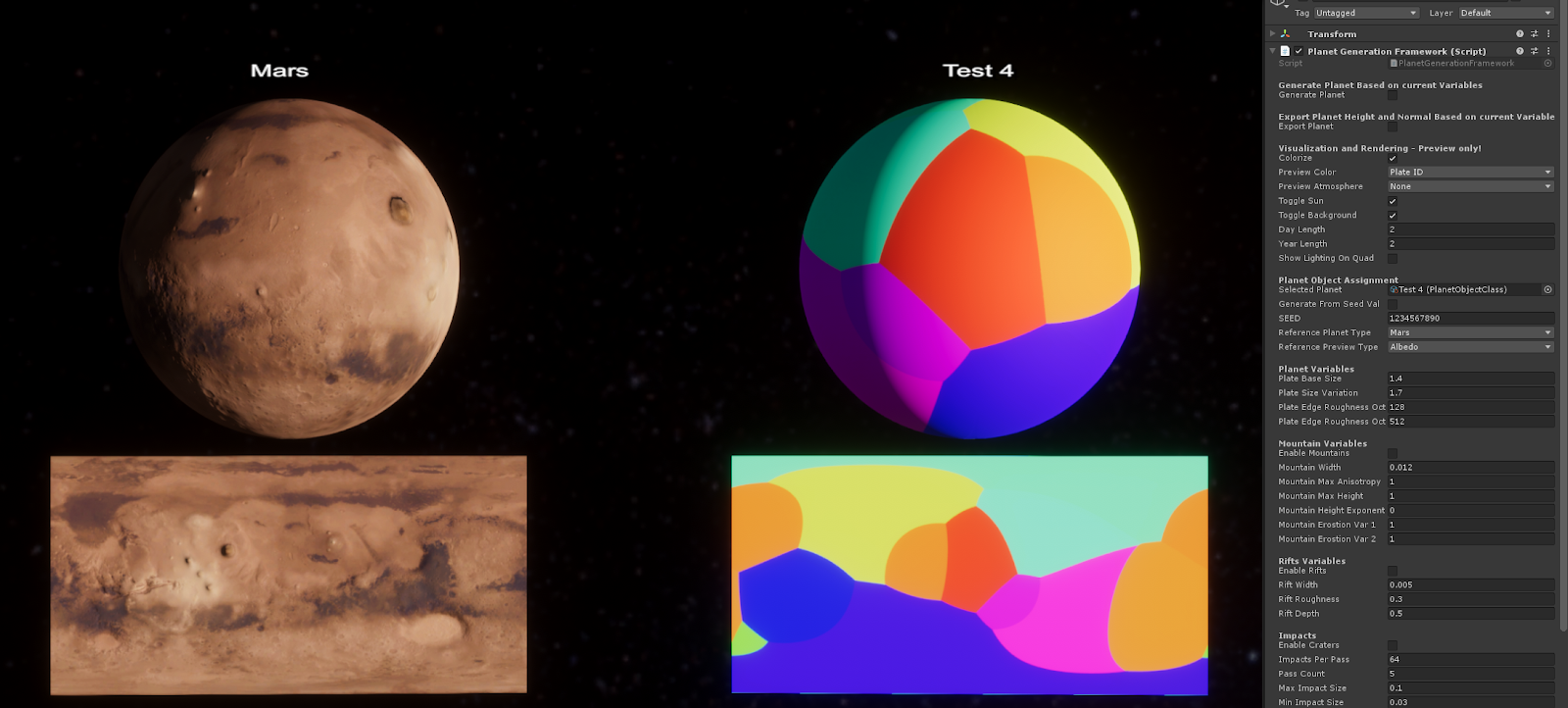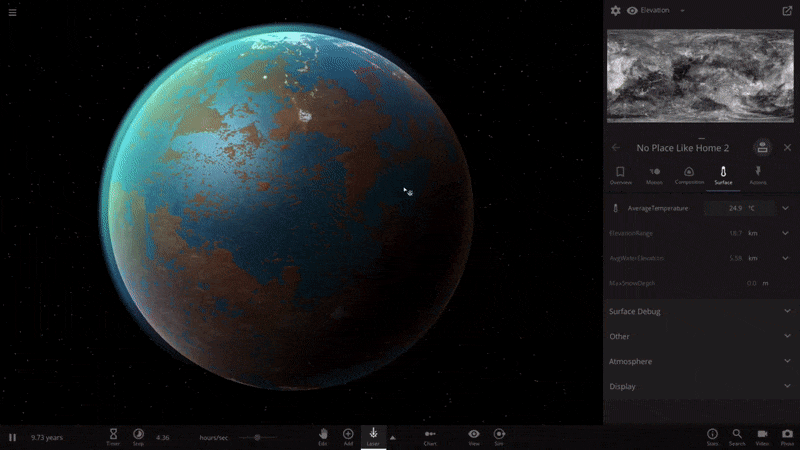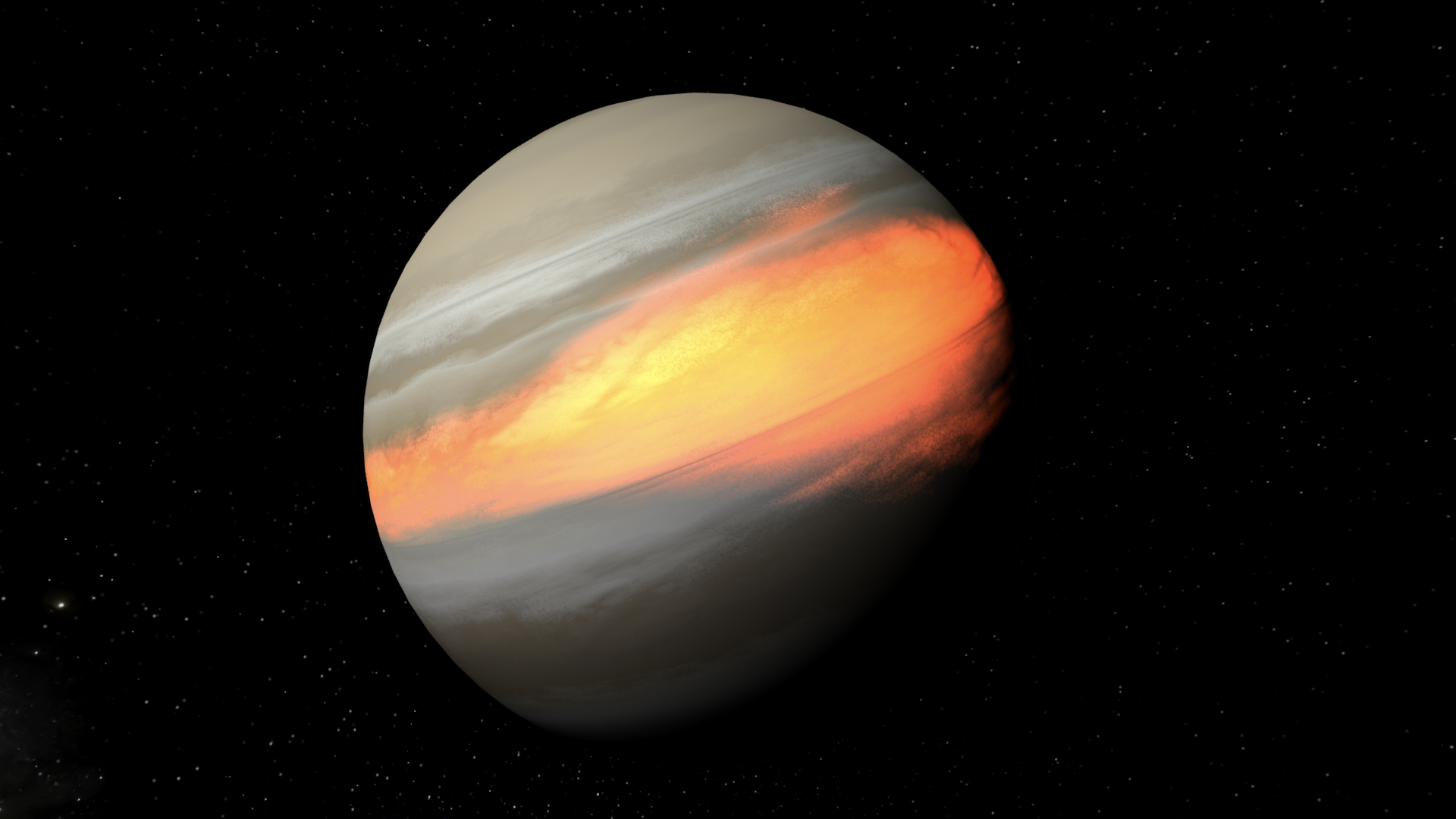
Surface Grids & Lasers are not yet available in any
official Universe Sandbox releases. But they are
now available in the experimental version of Universe Sandbox! Continue reading to learn more about how to try this version.
If you haven’t seen them yet, check out the previous Surface Grids DevLogs
#1,
#2,
#3,
#4,
#5,
#6,
#7,
#8,
#9, and
#10. Keep in mind these DevLogs document a work-in-progress feature. Anything discussed or shown may not be representative of future versions of Surface Grids.
What is Surface Grids?
Surface Grids is a big, complex feature still in development. It simulates the surfaces of planets, moons, and other objects, adding much more detailed, dynamic, and accurate visuals.
How? It uses a grid of data to keep track of thousands of points across an object’s surface. Each point stores local data, like temperature, elevation, and composition, for that spot.
It also simulates how this data changes and moves from one point to the next across the surface. This allows us to simulate water levels, water and vapor flow, heat diffusion, material states, and more. These are complex phenomena that we simulate with simplified models based on geophysical and climate science.
And as a bonus, it makes it possible to add tools like lasers, which are essentially just a fun way of heating up localized areas of a surface.
Time to Experiment
Surface Grids & Lasers are not yet available in official releases of Universe Sandbox. But you can now try them out in the experimental build! This experimental build has an incomplete version of Surface Grids & Lasers. You’ll see areas of the simulation and interface that are works in progress. And you’ll see plenty of bugs. Part of trying out the experimental build now is helping us make these features better as we continue development.
To opt into the experimental build:
- Right-click ‘Universe Sandbox’ in your Steam Library
- Click ‘Properties’
- Select ‘Betas’ tab
- Set dropdown menu to ‘experimental’
- Close Properties
- Once updated, launch Universe Sandbox
Check out What’s New | Experimental Builds for an overview of changes, tips, known issues, works-in-progress, and other notes.
Recommended sims:
- Earths Around Sun x10 Tidally Locked
- Bombardment of Moon
- Earth & 50 Colliding Moons
Recommended experiments:
- Laser the Earth! (Tools > Laser)
- Throw water at a cold planet (Tools > Material)
- Terraform a Random Rocky Planet
- Tidally lock planets close to a star
- Dock Temperature and Displacement maps during a collision
We shared this experimental build recently
on our Discord and we’ve had great responses so far, with plenty of feedback on what’s good, what’s broken, and what could be improved. Now we’d love for you try it out and give us feedback. The best place for feedback?
Discord! Just keep in mind this isn’t the final version and there’s still work to do.
Keep an Eye on the Data
https://www.youtube.com/watch?v=QlqFMrMNzN4
You’re welcome to enjoy Surface Grids & Lasers however you want, but if you ask us, we think the lasers are small potatoes compared to everything else that is now happening on object surfaces.
The Surface Grids map not only looks cool, but it also provides a lot of insight into what’s going on with Surface Grids. To see all of the available options, check out the very top of the Properties panel in the new Surface tab.
You can switch to Temperature, Elevation, Displacement (Impacts), Water Level, Lapse Rate, Vapor, and Ice, and you can dock multiple maps so you can watch them all at once. The most interesting data to watch depends on what is happening in the simulation, but you’ll also find that they’re all connected -- for example, a collision will affect all of these as the temperature rises and craters form, which in turn changes the elevation and may displace or add water, depending on the composition of the impacting object.
What’s Next

Video: Surface Grids data, such as temperature and water depth, shown directly on an object’s surface (work in progress).
Moving forward with these experimental builds, we’re balancing our development between addressing feedback from the community and continuing with everything we had already planned for the release of Surface Grids.
One issue that has come up for some users is performance. Surface Grids is the first big Universe Sandbox feature that relies on the graphics card (otherwise known as graphics processing unit or GPU). Previously, the heaviest calculations were from the physics side of the simulation, and these were all performed on the processor (CPU). Now with more emphasis on using the GPU, not just for visuals but for running all of the calculations involved with simulating surfaces, we’ve better balanced out the simulation calculations across a user’s hardware. But this means that users with older integrated or mobile GPUs (usually found in older laptops) may see worse performance than before. We’re doing our best to squeeze out all of the performance we can get on older hardware, but ultimately there’s a limit to what we can do, and the unfortunate reality is that we’ll likely be raising our minimum and recommended requirements soon to include more dedicated video memory.
Beyond that, our focus is on fixing any bug that comes our way and improving the new interface, all to make these features as fun and easy to use as possible. Plus there are some of the more involved projects, like implementing Brendan’s heightmap generator for random planets (
see our last DevLog), visual improvements and polish, the ability to see data maps directly on object surfaces (see video directly above), and more tools for surface interaction, all of which we’ll talk about more in future posts. See you then!










